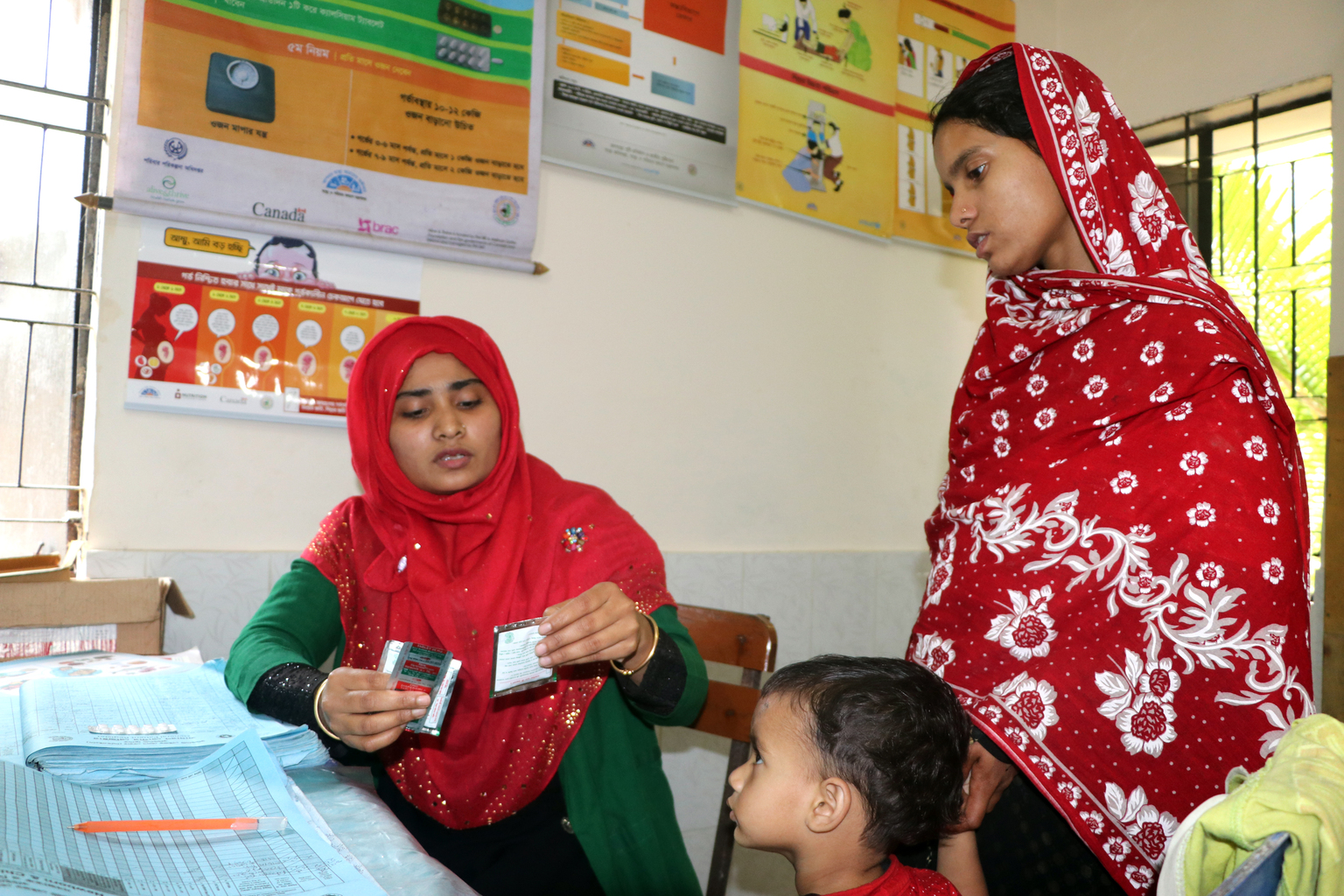All News
World Vision-led REACTS-IN receives $44 million to transform nutrition, empower women and promote gender equality
May 26, 2023
Tania’s relentless fight against childhood diarrhoea is saving young lives
After training sessions with Nutrition International, supported by the Zinc Alliance for Child Health, a healthcare provider in rural Bangladesh is successfully reducing the severity of childhood diarrhoea cases in her village.
Posted on March 16, 2021
Tania, the community healthcare provider, uses visual tools to explain the treatment.
Umedpur, Pirojpur District, BANGLADESH – The sun shines in the village of Umedpur, as Tania opens the doors of the local clinic. Since she took over as the community health care provider (CHCP) six years ago, the doors have been opened six days a week at 9 AM sharp. For the thousands of people who live in Umedpur, this health clinic is their first stop when they need treatment – and Tania is their first responder.
First in line are Ms. Hazera with her son, 22-month old Hasan, and Ms. Halima with her grandson Siyam, who is four years old. Both boys have suffered from diarrhoea for several days and are visibly weak. Both have been receiving low-osmolarity oral rehydration salts (LO-ORS) from their caregivers, but after a careful examination, Tania prescribes them zinc supplements to complement the LO-ORS. She discusses the treatment and passes along some more information about health and hygiene to the caregivers, who leave the clinic reassured. Once they leave, Tania updates her records and makes notes to follow up.
Her expertise in treating diarrhoea comes from training she received from Nutrition International, which was supported by the Zinc Alliance for Child Health (ZACH), an innovative partnership between Teck Resources Limited, Nutrition International and the Government of Canada. Launched in 2017, ZACH has equipped 880 frontline healthcare providers with hands-on training on the use of zinc to treat childhood diarrhoea, has ensured availability of and access to zinc, and has helped in the treatment of more than 88,000 episodes of childhood diarrhoea.


“I underwent training in April 2019, along with my fellow CHCPs and other frontline health workers,” says Tania. “The intensive training and interactive behaviour change material on zinc treatment and supplementation were particularly helpful in increasing my knowledge of the in matter. Now I feel more empowered and confident to treat diarrhoeal cases. In fact, there has been a reduction the number of cases in my catchment area due to the use of zinc along with LO-ORS.”
During the training, health workers were provided with information about identifying the signs and symptoms of diarrhoea, and how to use zinc and LO-ORS in treatment. They were also given behaviour change material to use in their counselling sessions with families and caregivers.
According to the World Health Organization, childhood diarrhoea is the second leading cause of child mortality globally. The partnership tackles this public health issue in Bangladesh, where children under three years of age experience an average of three episodes of diarrhoea every year.
ZACH is committed to saving children’s lives by scaling up the use of zinc combined with LO-ORS to treat diarrhoea in children 6-59 months of age. Building capacity of government frontline workers, including CHCPs, health inspectors, senior staff nurses, family welfare visitors, family planning inspectors, statisticians and storekeepers, the partnership has facilitated effective case management of childhood diarrhoea and contributed to a significant national decline.
Although Tania and her colleagues still receive a number of childhood diarrhoea cases throughout the year, they are better equipped than ever to treat them.
“Managing diarrhoea with LO-ORS is a popular and widely known practice,” she says. “But combining it with zinc, an essential micronutrient, has worked wonders – reducing the duration and severity of diarrhoeal episodes in children I see.”
Bangladesh is home to approximately 18,000 community clinics − one for every 6,000 people in rural areas. In each one, dedicated health workers like Tania are working tirelessly to save young lives across the country. With support from ZACH, their work is becoming a little easier.